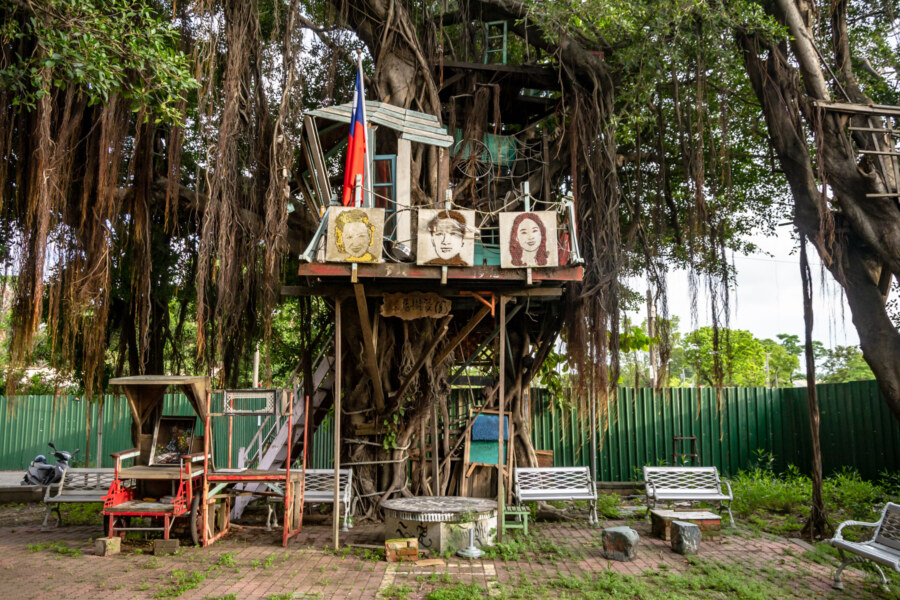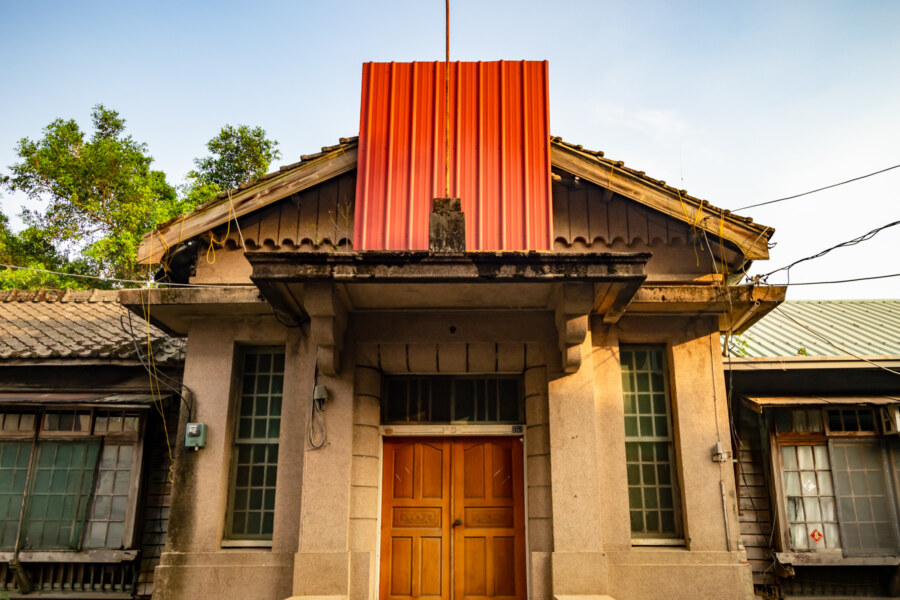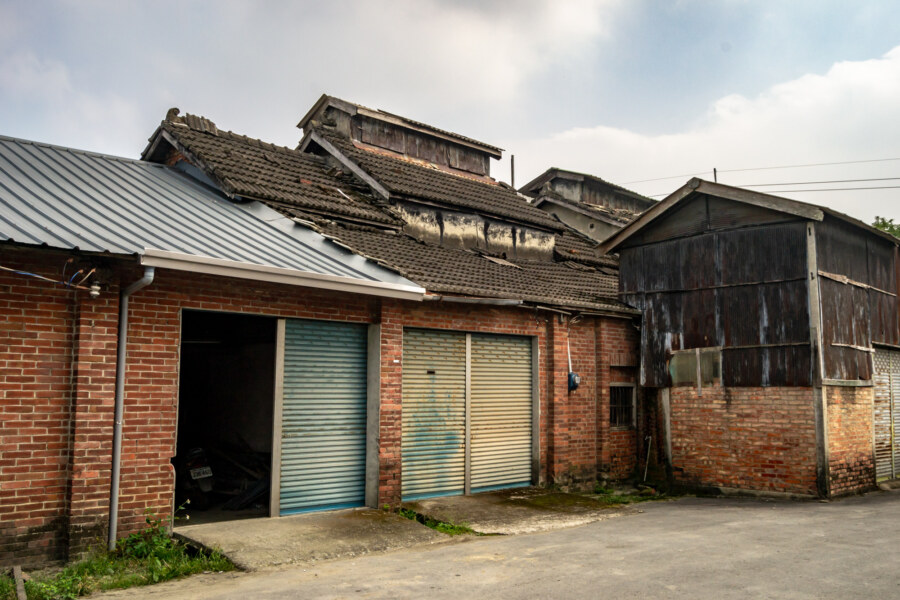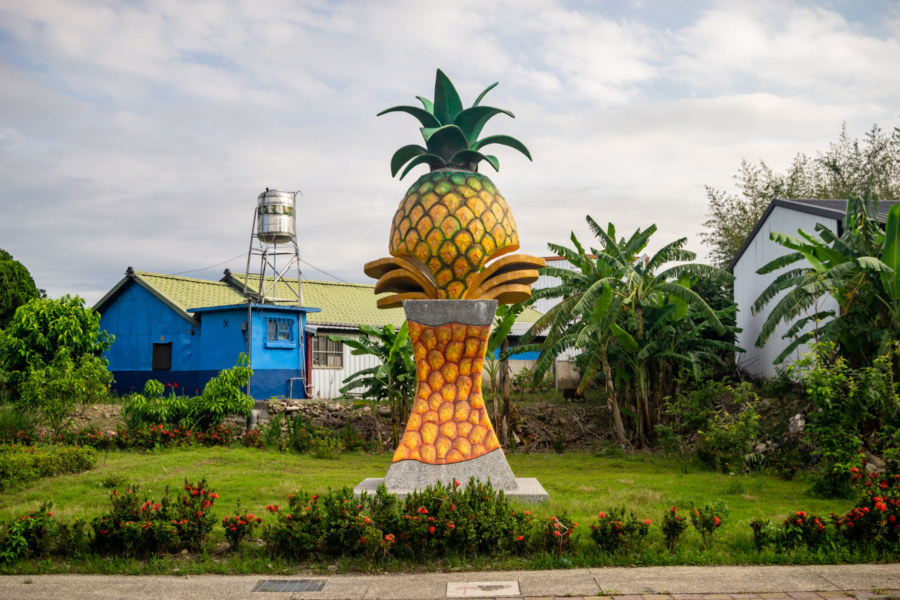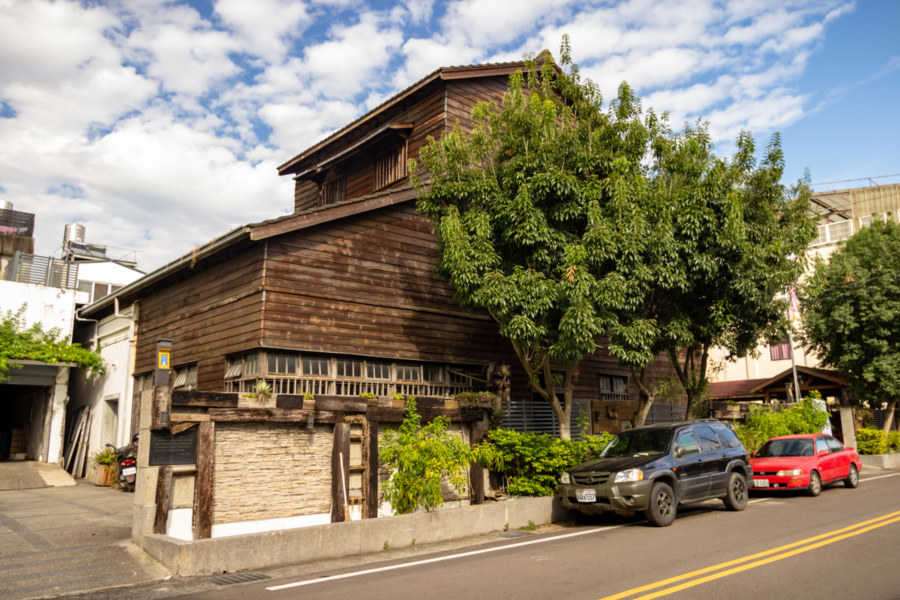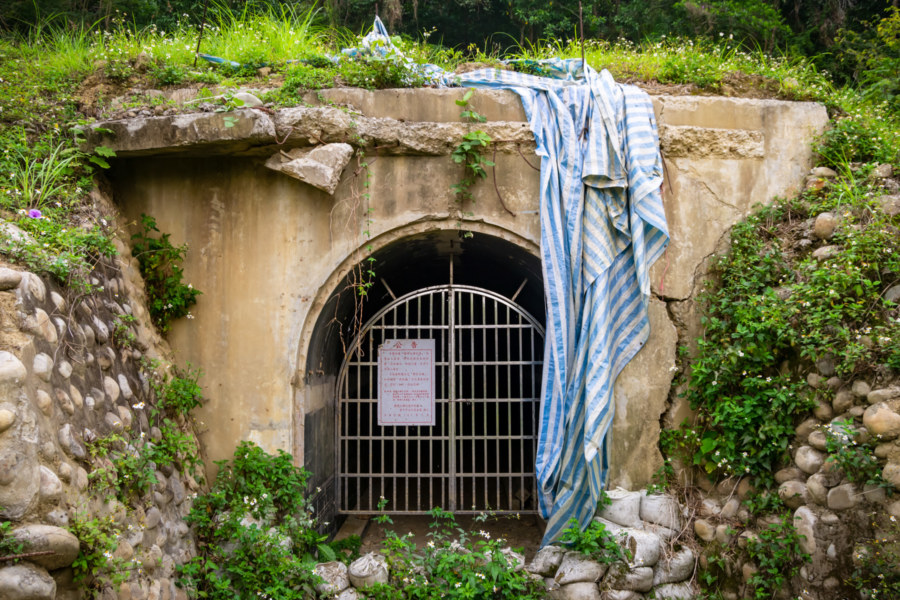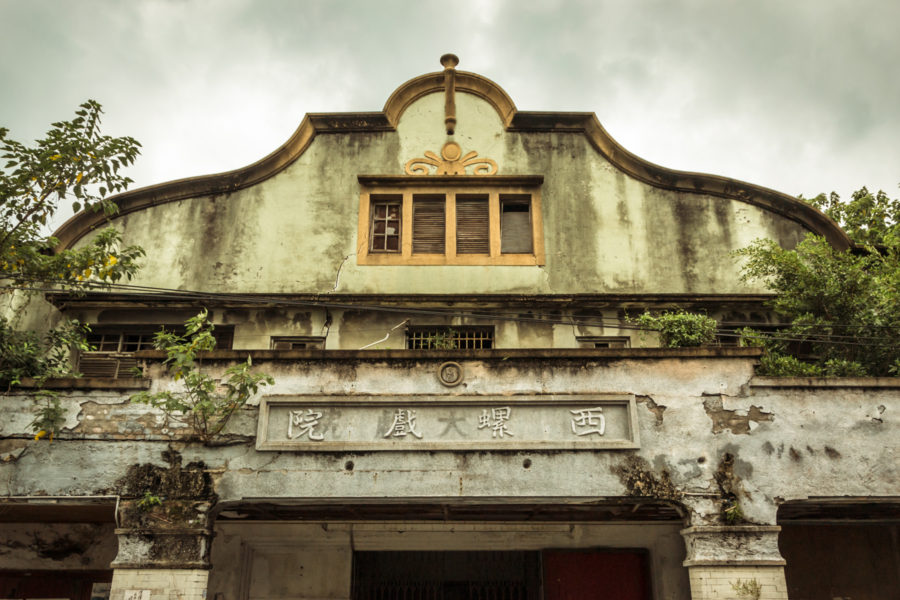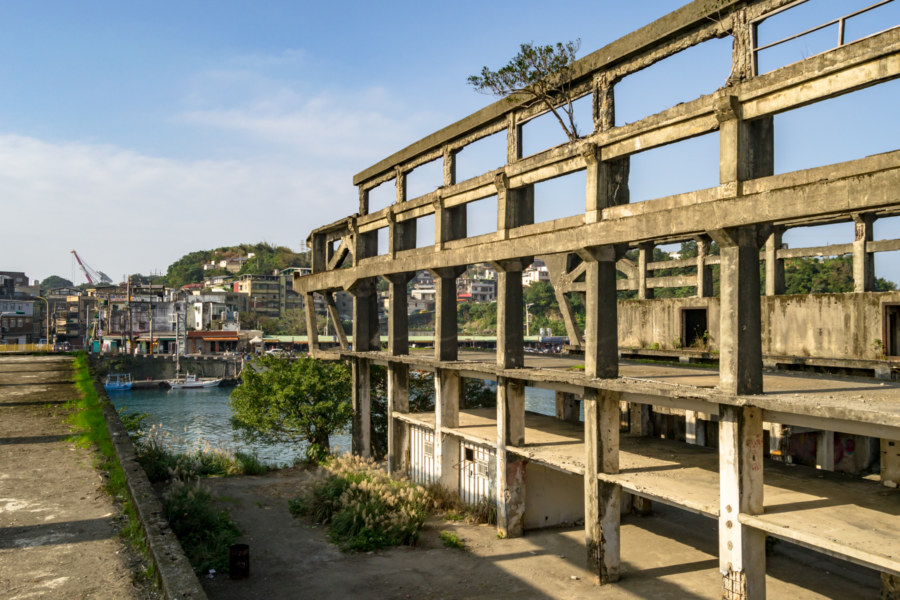The Second Air Force New Village (二空新村) is a former military dependents’ village in Tainan, Taiwan. It was established east of Tainan Airbase in 1950, primarily for members of the Republic of China Air Force and their families, and it eventually grew to become the sixth most populous of the official military villages in Taiwan. From 1950 into the 1960s several waves of construction and development increased the village to nearly 1,000 households, with a sizable number of unregistered structures scattered around the periphery. As with most other military villages this one was steadily dismantled and demolished over the course of many years in the late 2000s and early 2010s, part of a nationwide urban renewal program that relocated the remaining residents into more modern apartment blocks.
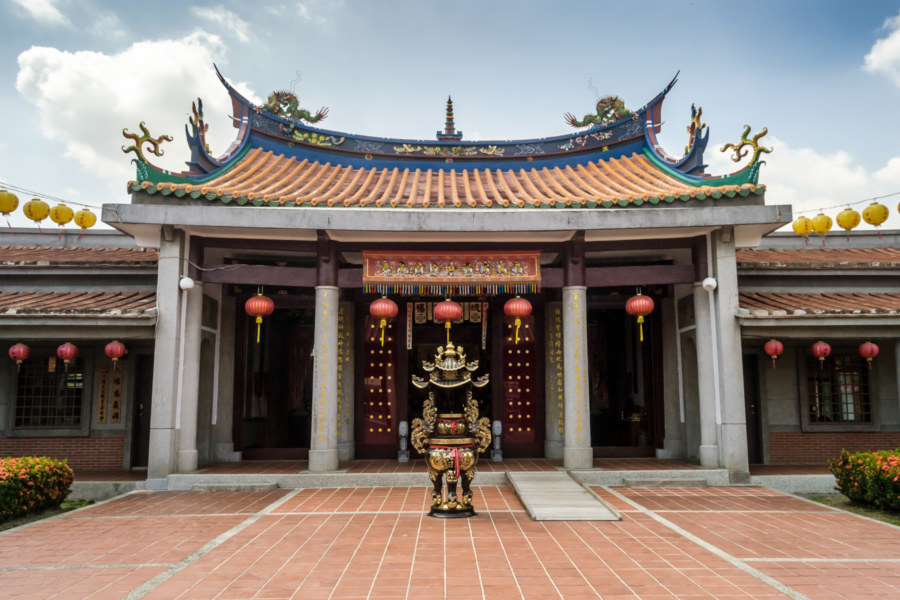
Gathered here are officially recognized cultural assets as designated by the Ministry of Culture (文化部). These assets include buildings, monuments, bridges, and other physical structures as well as natural landscapes and intangibles. For a broad overview have a look at some of the most treasured cultural assets in Taiwan.
Toubiankeng Police Station 頭汴坑警察官吏派出所
Tóubiànkēng Police Station (頭汴坑警察官吏派出所) is a remarkably well-preserved Japanese colonial era building situated in a small settlement in the foothills of eastern Taichung, Taiwan. Originally established in 1914, the station was reconstructed to standard specifications with reinforced concrete, red brick, and local cypress, likely in the early 1930s. Not only was it a police station, but it also served as a dormitory for the officers stationed here, agents of a colonial authority keen to extend control into the rugged mountains to the east. After the ROC assumed control of Taiwan operations continued much as before, and was only decommissioned in 1981 when a new police station was built immediately out front.
Postcards From Linnei 林內明信片
Linnei is a small rural township located on the south side of the Zhuoshui River in northeastern Yunlin, Taiwan. Despite its strategic position on the Western Trunk Line this township remains mostly pastoral and undeveloped, with little industrial activity compared to neighboring Douliu, the administrative seat of the county. Population in the township peaked at nearly 23,000 in the 1970s and has been declining ever since, recently falling below 18,000 as rural flight continues apace. Nowadays the local economy mostly revolves around agricultural products such as rice, bamboo, and tea, but Linnei was once a major center of tobacco cultivation, traces of which can be found scattered across the countryside.
Huadong Valley Ride 2018: Guanshan to Taitung City
My fifth day of riding the Huadong Valley in 2018 began in Guanshan and ended in Taitung City, approximately 45 kilometers further south. Although there were several uphill segments this was one of the least demanding rides of the entire trip, partly because I had a good night’s rest, but also due to some cloud cover moderating the influence of the tropical sun. After rising I cycled over to Little Star Breakfast shop (小星星早餐店) to try their fluffy handmade dànbǐng 蛋餅 (a crepe-like egg roll with various fillings). Feeling recharged, I set out to catalog more of eastern Taiwan’s historical relics and natural wonders.
Shigang Rice Barn 石岡穀倉
Shigang Rice Barn 石岡穀倉, formally known as the Shigang Farmers’ Association Rice Milling Barn 石岡農會碾米穀倉, is one of the best preserved Japanese colonial era rice barns in Taiwan. Constructed with locally-sourced timber in 1941, it was designed to be earthquake-resistant, benefitting from hard lessons learned from the 1923 Great Kantō Earthquake and the 1935 Hsinchu-Taichung Earthquake. It was in use for many decades before modernization of rice milling made it obsolete, presumably sometime in the 1980s or 1990s, leaving the building derelict and threatened with demolition.
Huadong Valley Ride 2018: Yuli to Guanshan
Day four of riding through the Huadong Valley of eastern Taiwan in 2018 began in Yuli, the midpoint of this bicycle trip from Hualien City to Taitung City. From the weather report I knew I’d have another challenging ride ahead—yet again the mercury was due to exceed 35 degrees. Luckily I was in no great rush, as I had allocated an entire week for a trip that experienced riders could easily manage in two days. I made good use of that extra time, making numerous stops and detours to document some of the many historic and cultural sites along the way, many of them quite obscure. I ended the day in Guanshan, slightly more than 40 kilometers down the valley.
Yuli Shinto Shrine 玉里神社
Yuli Shinto Shrine 玉里神社 is a Japanese colonial era historic site in Yuli, the largest town in the middle of the Huādōng Valley 花東縱谷 of eastern Taiwan. Formally known as Yuli Shrine 玉里社 (Tamasato-sha in the original Japanese), it was constructed in 1928, the third year of the Shōwa era. The vast majority of Taiwan’s several hundred Shinto shrines were destroyed in the decades following the Japanese withdrawal—but enough of this shrine remained to justify its official designation as a cultural asset in 2008. Since then some effort has been undertaken to restore the site, which occupies a hilltop at the western edge of town, and it now ranks among the most well-preserved in the remote eastern part of the country.
Beigou Forbidden City Vault 北溝故宮文物典藏山洞
Beigou Forbidden City 北溝故宮 is an obscure historic site hidden in the hills of Wufeng, Taichung. From 1949 to 1965 it was the provisional base of operations for the team of archivists, curators, scholars, and technicians overseeing the subset of the Palace Museum collection sent for safekeeping to Taiwan by the Kuomintang (KMT) in the later stages of the Chinese Civil War. Nowadays this collection is managed and displayed by the National Palace Museum 國立故宮博物院 (or simply Gùgōng 故宮 for short), situated in Taipei, and almost nothing remains of the facilities in Wufeng. The one exception is an underground vault constructed in 1953.
Xiluo Theater 西螺大戲院
Xiluo Theater (西螺大戲院) is perhaps the most widely-known of the many abandoned theaters of Taiwan. It is located just off the main commercial street running through Xiluo, a small city of approximately 46,000 residents on the south bank of the Zhuóshuǐ River (濁水溪), the traditional boundary dividing northern and southern Taiwan. Completed sometime between 1937 and 1940, this reinforced concrete and brick building replaced a wooden theater originally built in the 1920s. The new theater survived the war unscathed and flourished during the golden age of Taiwanese cinema in the 1950s and 60s. In those days the area surrounding the theater became known as Xiluo’s Xīméntīng (西門町), a name derived from Taipei’s popular entertainment district. Business declined sharply in the early 1980s and the theater was abandoned to the elements by 1988, a consequence of changing consumer habits, the rise of television and home video, and population outflow to larger cities. More recently it has become a popular site for photography, video production, urban exploration, and historical tourism.
Agenna Shipyard 阿根納造船廠
Āgēnnà Shipyard 阿根納造船廠 is among the most popular abandoned places in northern Taiwan. It is located in the historic port city of Keelung across the narrow Bāchǐmén Channel 八尺門海峽 from Hépíng Island 和平島, site of the first Spanish settlement in Taiwan, and just around the corner from the equally photogenic Zhèngbīn Harbour 正濱漁港. The shipyard opened in 1967 but was only in business until the 1980s. After many years of neglect the skeletal ruins of the shipyard aroused renewed interest in 2016 when the current leaseholder attempted to demolish the structure. An immediate public outcry prompted the government to designate the shipyard a heritage property, and the cultural bureau is now formulating plans to develop the area into a tourist attraction of some kind. In the meantime, the crumbling ruins of the former shipyard attract hundreds or even thousands of daily visitors.
